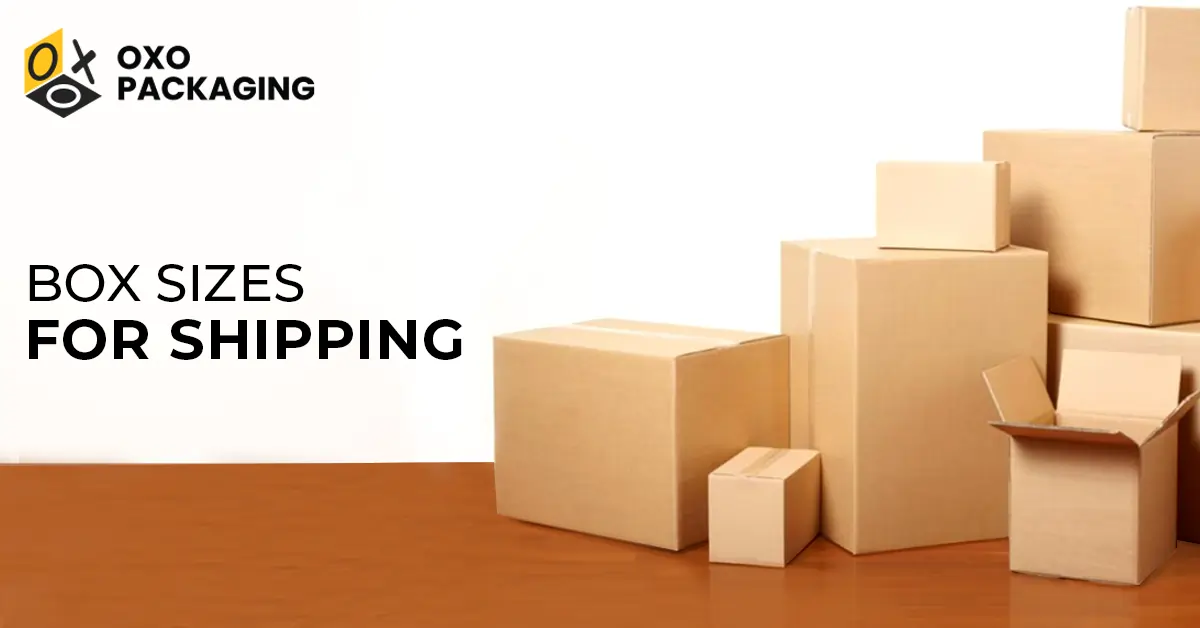How to Measure Box Sizes for Shipping

It is relatively easy to measure the box sizes for shipping! However, for customized packaging, the accurate dimensions are essential for the security of your product. Even though measuring a box is not difficult, doing it correctly for a custom package requires a little more care.
Every package must have the precise box measurements. The reason is that they significantly impact three factors:
- how much stuff is needed,
- how much it costs to make it,
- and how much it costs to ship and store it.
Correct measurements of shipping box sizes is necessary because little movement in a box means less chance for damage and low overall costs.
We have provided an easy, step-by-step guide for finding and measuring dimensions and calculating a box's volume.
So, without any further delay, let's start learning.
Importance of Measuring Shipping Boxes
It is important to know about how to measure box sizes for shipping, retailing, and storage. Correctly measured boxes offer your products a snug fit, ensuring superior protection during shipping, handling, and storage.
The right measurements of product boxes ensure the professional presentation of your products to impress customers. You can get more repeat customers with a higher customer satisfaction rate when your products are safely delivered in the right box packaging.
Another important thing about measuring the right dimensions of a box for shipping is that it can make or break your brand image. Customers make a brand perception with the product packaging and how your products are delivered to them. This is why using correctly measured boxes that align with the dimensions of your boxes helps you boost your business.
Things You Need to Measure a Box Size
Before you start learning the steps to measure box sizes for shipping, you must get the following essential tools for correct measurement:
- Take both flexible measuring tapes.
- Get a long yardstick for large shipping boxes.
- A ruler for measuring small mailer boxes.
- A notepad to write down the measurements.
- A pen to write the dimensions.
3 Tips to Measure a Box Correctly
- Always double-check the measurements for accurate results.
- Measure at the box's tallest points to account for any bulges for odd-shaped boxes.
- Use the same unit metric (inches, centimeters, etc.) for all measurements like length, width, and depth.
Measuring the Box Sizes for Shipping
The fun activity of measuring the box sizes for shipping starts with collecting three readily available objects. They consist of a box, a ruler, a pencil, and some paper to write down the measurements.
To measure the box, you need to know its dimensions. There are three dimensions to a cardboard box. Let us explain them below for your better understanding:
The Three Shipping Box Dimensions
Three main shipping box dimensions must be measured inside, not outside. These three dimensions are depth, length, and width. Keep in mind that different businesses interchangeably use depth and height for shipping box dimensions. However, when taking or reading measurements, the standard order of sizes is still length, width, and depth (LxWxD) or length, width, and height (LxWxH).
- Length: The longest dimensions of a box when viewed from the box's top.
- Width: The width is shorter when viewed from the top of the box. The wide side consists of the flap. You must turn the box at a 90-degree angle to measure the width.
- Depth (Height): The angle between the length and the width. These are the only packaging boxes dimensions without a flap.
Measure with a ruler or tape, rounding each result to the nearest whole inch.
How to Calculate the Volume of the Box
By calculating the volume of your packages, you can more easily plan your shipping, warehousing, and distribution procedures. Volumetric calculations are essential for material and cost optimization and structural engineering.
The volume calculation depends on a mathematical formula that is very simple to use.
To calculate the volume in cubic centimeters, simply multiply the three dimensions using the following formula:
Length x Width x Depth = Volume
Let us explain with an example.
L = 17in
W = 13in
H = 8in
17 x 13 x 8 = 1768 cubic inches (in3).
To be clear, knowing which measurement goes with which dimension when using the above formula is optional. However, knowing this information is highly advised to prevent confusion or errors in the future; it is just a good habit to keep up.
However, you can use this handy calculator to obtain precise volume measurements for your small box dimensions if you struggle with math and are looking for a tool to make the process simpler.
How to Measure the Girth of the Box
You might need to determine the girth of unusually shaped packages like cylindrical boxes (used to ship prints or posters). Some carriers use the box's diameter to determine shipping costs.
By using the flexible measuring tape to determine the distance around the package's widest point, you can determine the circumference of a box. This measurement is the girth of your small boxes for shipping.
The width, height, and times must all be multiplied by two to determine the girth.
Girth = 2(W + H)
Using the aforementioned example, we will multiply the width (13 inches) by two. Giving us 26 as a result. Next, we multiply the height (8 inches) by two. With this, we would have 16.
Then, we add the outcomes to obtain the circumference (girth).
26in + 16in = 42in
Common Sizes of Shipping Boxes for Products
The most standard-size boxes and examples of products that can be shipped in each are listed below:
Approximately 17" x 12 3/8" x 12 3/8": books, magazines, CDs, DVDs, media, and small electronics
18" x 16" x 18": towels, lamps and lampshades, and home accessories
18" x 18" x 24": kitchenware, pillows, outdoor and pool supplies
24" x 20" x 24": drapes and collapsed curtain rods, bigger appliances, and sporting equipment
How to Calculate the Dimensional Weight of a Box?
Use the formula of length" x width" x depth" to measure the dimensions of a shipping or retail product box. It is also important to know the cubic size or area of the box, which can be calculated by multiplying the length by the width by the height of the box.
Now, you should find out your shipping carrier’s divisor to calculate the dimensional weight of your shipping box. All you need is to divide the cubic size of the box by your shipping carrier’s divisor. For example, if you are using FedEx, the cubic size of your box will be divided by 139.
Different Shipping Box Shapes
Shipping boxes come in a range of sizes and shapes. The most common box sizes for shipping are:
- Cube boxes: These boxes are an ideal packaging solution for shipping smaller items. They are excellent if you market products like pre-packaged jewelry and electronics.
- Tall boxes: This standard shipping box size is ideal for tall products that cannot be folded or bent because they are smaller in length and width.
- Long boxes: They are less wide and tall, but they are longer. These boxes are simple to stack on top of one another for delivery and storage.
- Telescopic boxes: Ideal for delivering long items that do not neatly fit inside a single box. Telescopic boxes can be assembled quickly to ship products with unusual shapes.
- Side-loading boxes: These boxes are wide and thin, with a tiny opening on one side to take out the items easily. You can perfectly pack things like photo frames or posters in these boxes.
Moreover, you can order different custom size shipping boxes from packaging suppliers as per your needs and demands.
Measure Away!
There is always a box out there that will ship your delicate items effortlessly. You just need to select the right one!
Like any other aspect of your business, carefully plan your shipping needs before making any material purchases.Keep in mind that the box size and style you require depend on more than just the items you ship.
There are three main factors you need to consider while choosing the shipping box for your products;
- Your budget
- Protection of the item
- And the unboxing experience
So go ahead and measure box sizes for shipping to find the appropriate packaging for your distinctive goods. OXO Packaging's custom packaging experts can guide you if you need assistance measuring the box size.
To speak with our team of incredibly talented graphic artists and engineers, request a free consultation. They will walk you through each step of the process and help you elevate your packaging to the next level.
FAQS:
What are standard size shipping boxes?
Here are the three common types of shipping boxes:
18" x 16" x 18":
18" x 18" x 24":
24" x 20" x 24"
How do you calculate the size of a box?
You must take measurements of a box's length, width, and height to determine its size. To calculate the box's volume in cubic inches, multiply all three measures.
Is there an app to measure a box?
Yes, you can measure a box with a few apps. For instance, the Measure Kit app for the iPhone and iPad offers a variety of advanced tools for measuring 3D objects, including boxes.
Other apps, like AR Measure, use augmented reality and the camera on your device to take real-time measurements of objects.




